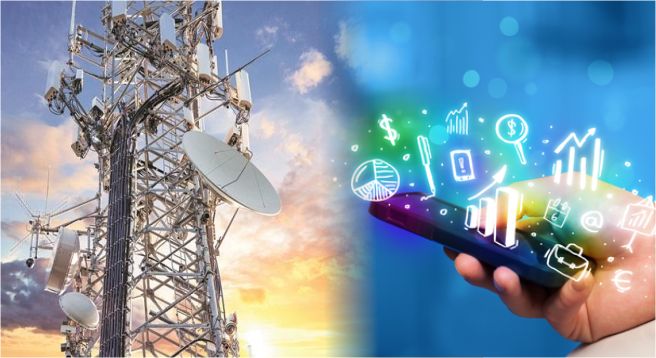Rural tele-density jumped from 44 percent in March 2014 to 59 percent in September 2021. Broadband connections increased to 79 crore (790 million) in 2021 from a shade over six million in March 2014, growing by 1200 percent. Government approved structural and process reforms in the telecom sector. 6G Technology Innovation Group (TIG) was constituted by the government to prepare India’s manufacturing and services ecosystem to capitalise on 6G opportunity, while permissions have been given for providing hi-speed broadband through satellites.
These and more such achievements were listed by the Ministry of Communications Monday as part of 2021 year-end review.
Increase in Telephone Subscription: Total telephone connections rose to 118.9 crore in September 2021 from 93 crore in March 2014, with a growth of 28 percent in the said period. The number of mobile connections reached 1165.97 million in September 2021.
Urban telephone connections rose to 66 crore in September 2021, while the growth in rural telephone connections was 40 percent.
Jump in Internet and B’band Penetration: Internet connections jumped from 25.15 crore in March 2014 to 83.37 crore in June 2021, registering a growth of 231 percent.
Broadband connections rose from 6.1 crore in March 2014 to 79 crore in June 2021, while ARPU per GB wireless data reduced to Rs. 9.8 in June 2021 from Rs.268.97 in December 2014, a reduction of more than 96 percent, the Department of Telecoms (DoT) claimed in a statement.
Average monthly data consumption per wireless data subscriber increased by 22605 percent to 14 GB in June 2021 from 61.66 MB in March 2014.
Increase in FDI: Foreign Direct Investment (FDI) in the telecom sector rose by around 150% between 2014-2021 from Rs. 62,386 crore in 2002 to 2014 to Rs. 1,55,353 crore during 2014-2021.
Telecom Reforms: Reforms announced in September could be said to be one of the bigger achievements of the government.
In view of the telecom industry facing financial stress and challenges on issues like liquidity, rationalization of levies, adjusted gross revenue (AGR) and spectrum pricing, the government approved a number of structural and process reforms in the sector including the following:
- Rationalization of AGR: Non-telecom revenue will be excluded on prospective basis from the definition of AGR.
- Bank Guarantees (BGs) rationalized: Huge reduction in BG requirements (80%) against License Fee (LF) and other similar levies. No requirements for multiple BGs in different Licensed Service Areas (LSAs) regions in the country. Instead, one bank guarantee will be enough.
- Interest rates rationalized/ penalties removed from October, 2021 on delayed payments of license fee (LF)/spectrum usage charge (SUC), which will attract interest rate of SBI’s MCLR plus 2 percent instead of MCLR plus 4 percent; interest compounded annually instead of monthly and penalty and interest on penalty removed.
- For auctions held henceforth, no bank guarantees will be required to secure installment payments.
- In future auctions, tenure of the spectrum increased from 20 to 30 years.
- Ease of doing business promoted and cumbersome requirement of licenses under 1953 Customs Notification for wireless equipment removed. Replaced with self-declaration.
- Standing Advisory Committee on Radio Frequency Allocation (SACFA) clearance for telecom towers eased.
Projects and Initiatives:The flagship BharatNet project is being implemented in a phased manner to provide broadband connectivity to all the Gram Panchayats (approx. 2.6 lakh GPs) in the country. Phase-I was completed in December 2017 covering over 1 lakh GPs.
In 2021, a total number of 17,232 GPs have been made service-ready of which 16,344 GPs are on optical fiber cable and 888 GPs are on satellite media.
As on November 2021, out of the remaining Gram Panchayats to be connected under BharatNet Phase-II, a total of 1,79,247 GPs have been connected by laying 5,52,514 km OFC, out of which 1,61,870 GPs are service ready.
Submarine OFC connectivity laid under comprehensive telecom development plan for islands like Andaman & Nicobar and Lakshadweep.
Satellite-based broadband connectivity for Lakshadweep islands was also launched in 2021 for providing broadband services. Under this satellite project, the bandwidth has been enhanced from 318 Mbps to 1.71 Gbps for Lakshadweep islands. For Agathi, Androth, Minicoy and Kavaratti Islands, the bandwidth has been enhanced by 200 Mbps, whereas for Amini, Chetlat, Kalpeni, Kadmath, Kilt and Bitra islands, the bandwidth has been enhanced by 100 Mbps.
50,000 access points deployed under PM-WANI or public Wi-Fi networks project. It is expected that with public Wi-Fi broadband, the user experience and quality of service for broadband will be improved significantly. Public Wi-Fi Hotspots are also being created under BharatNet. Proliferation of Public Wi-Fi Hotspots will lead to increased employment for small and micro entrepreneurs, and provide them with an additional source of income.
Online Licensing for Use of Spectrum:This initiative was launched on 29.06.2021 to facilitate online licensing for use of spectrum to conduct experiments, demos and for testing requirements. The scope of the existing Saral Sanchar Portal of DoT, on which applications for access services, Internet services and other licenses are being received, has accordingly been expanded to cover this initiative and to make the approval process faceless, transparent and time bound.
Liberalisation of Unified License and Commercial VSAT CUG License: The Unified License and commercial VSAT CUG license regimes have been liberalized.
Sharing of active and passive infrastructure allowed under any service authorization for providing other authorized services to the same license.
Sharing of gateway hub for HTS satellites, managed and operated by the satellite provider itself, with the satellite bandwidth seeker too okayed.
Harnessing High Throughput Satellites (HTS):HTS have the capability of delivering significantly enhanced data rate as compared to conventional satellites. The deployment of HTS in coming times will be instrumental in providing abundant capacity and connectivity to unconnected or sparsely connected regions. DoT has simplified the regulatory regime, which will enable a framework for sharing of HTS gateway hubs.
The data speed restrictions for different types of satellite-base telecom network deployments have been done away with, thereby enabling deployment of faster throughput networks. The relevant standard has been revised and in line with advancements in technology in this field.
Low Earth Orbit (LEO) Satellites:It is an emerging satellite technology that offers low latency communication by virtue of low propagation delay. Such new technology satellites would supplement availability of requisite bandwidth that could be utilized for rendering broadband services along with voice services in difficult terrain and far-flung areas bringing digital inclusion and digital empowerment at par with others to fulfill the vision of the government.
Planning for the Future: Technology ownership is considered necessary to take lead in the global competitive market and also to make value addition in global supply chains with IPRs.
The government undertook initiatives related to next-generation communication technologies, including 5G, upcoming 6G, quantum communications, etc.
With regard to rollout of 5G services, Bharti Airtel, Reliance Jio and Vodafone Idea have established 5G trials sites in Gurugram, Bangalore, Kolkata, Mumbai, Chandigarh, Delhi, Jamnagar, Ahmadabad, Chennai, Hyderabad, Lucknow, Pune and Gandhi Nagar cities. These metros and big cities would be the first places for the launch of 5G services in the country, next year.
The 6G Technology Innovation Group (TIG) too was constituted by DoT in 2021 with the objective to co-create and participate in the development of the 6G technology ecosystem through increased participation in capability description, standards development at international standard-setting bodies.
 Sony MAX 1 set to launch on May 1
Sony MAX 1 set to launch on May 1 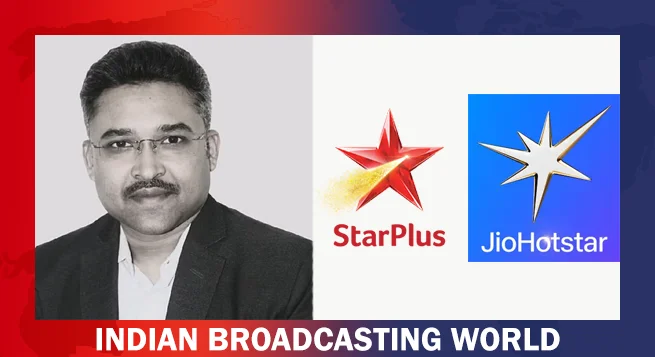 Avijit Dhar appointed VP-Marketing for Star Plus
Avijit Dhar appointed VP-Marketing for Star Plus 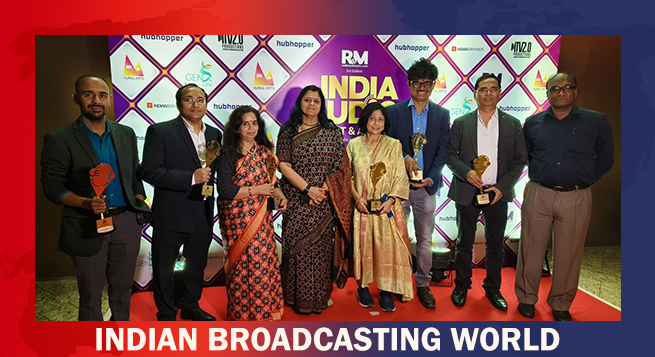 Akashvani bags 6 honours at India Audio Summit & Awards
Akashvani bags 6 honours at India Audio Summit & Awards  Govt tells media to desist from live coverage of defence ops
Govt tells media to desist from live coverage of defence ops  Jio Platforms net profit up 25.7% in Jan-Mar quarter
Jio Platforms net profit up 25.7% in Jan-Mar quarter 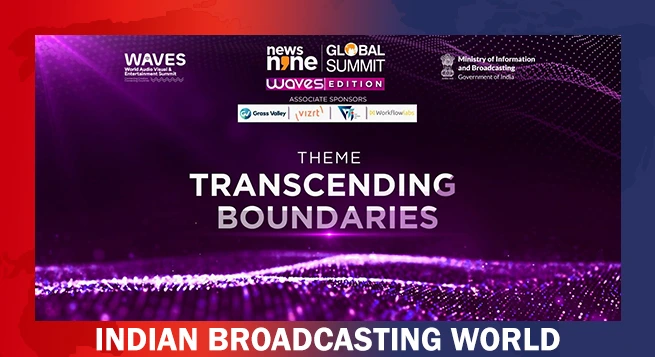 TV9, I&B Ministry join hands at WAVES 2025
TV9, I&B Ministry join hands at WAVES 2025 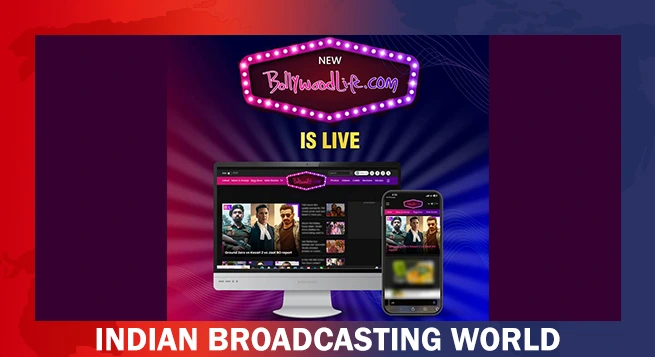 BollywoodLife.com unveils sleek new revamp
BollywoodLife.com unveils sleek new revamp  Hoopr unveils ‘Smash’ platform to simplify Bollywood music licensing
Hoopr unveils ‘Smash’ platform to simplify Bollywood music licensing 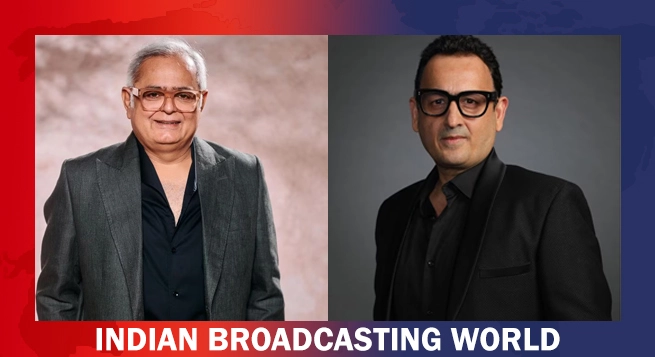 Bhanushali Studios, True Story Films forge three-film collaboration
Bhanushali Studios, True Story Films forge three-film collaboration  Tamannaah Bhatia joins Sidharth Malhotra in ‘Vvan’
Tamannaah Bhatia joins Sidharth Malhotra in ‘Vvan’ 


